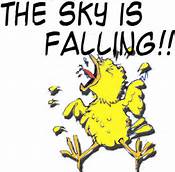Quote:
Originally Posted by Freddy

4.23.3B. And I don't think anything put out just now invalidates that.
|
Thanks Freddy.
4.23.3 SITUATION B: A1 is dribbling near the sideline when B1 obtains legal
guarding position. B1 stays in the path of A1 but in doing so has (a) one foot
touching the sideline or (b) one foot in the air over the out-of-bounds area when
A1 contacts B1 in the torso. RULING: In (a), B1 is called for a blocking foul
because a player may not be out of bounds and obtain or maintain legal guarding
position. In (b), A1 is called for a player-control foul because B2 had obtained
and maintained legal guarding position. (4-23-2; 4-23-3a)
4-23-2: To obtain an initial legal guarding position:
a. The guard must have both feet touching the playing court.
b. The front of the guard’s torso must be facing the opponent.
4-23-3: After the initial legal guarding position is obtained:
a. The guard may have one or both feet on the playing court or be airborne,
provided he/she has inbound status.
Basketball Points of Emphasis - 2017-18
4. Guarding. ... Once a defensive player obtains legal guarding position by facing an opponent with both feet of the floor inbounds, he/she may move to maintain that position in any direction except toward the offensive player being guarded when contact occurs. The defense is not required to keep both feet on the playing court and may jump vertically or laterally to maintain the legal position. If contact occurs prior to the offensive player getting head and shoulders passed the defender the responsibility is on the offensive player.
I believe that I've misread the new Point of Emphasis. I took, "The defense is not required to keep both feet on the playing court" to mean that the defensive player is allowed to be out of bounds (off the playing court), especially since the statement appears one sentence after the statement, "both feet of the floor inbounds".
In reality, thanks to Freddy's post, I now believe that, "The defense is not required to keep both feet on the playing court", really means that the defensive player may, "jump vertically" (off the playing court).
I'm sorry if I wasted everybody's time.
Quote:
Originally Posted by Freddy

The phraseology explaining this situation may not be worded ideally ...
|
Freddy's post (above) makes me feel a little better. Not much, but a little.
And some figured it out a while ago.
Quote:
Originally Posted by OKREF

... what they are meaning by saying not having to keep both feet on the playing floor means the defense can jump, or be moving and a foot or both would be off the floor ...
|
Quote:
Originally Posted by bucky

... there was a case play specifically regarding a foot OOB and it being an automatic foul on the defense.
|
This is why I like hanging out with people smarter than me. They're always there to fix my mistakes. If any of you guys need a partner next season, give me a call.
